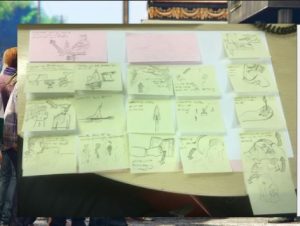You need to get to know these theorist’s and start using their terms – they could come up in the exam as Narrative is one of the Concepts, like Representation, that you could be asked about.
Narrative Theory
Narrative definition: The contents (events, action) and the way these are structured together form the basis of any narrative. A story can be relayed using any combination of communication i.e. visuals, words, drama etc.
Narrative is the ‘study of stories’. It includes the following:
- The order in which the story is told (structure)
- How the audience is positioned in relation to the narrative.
- The character’s journey. What epiphany do they have?
- The conflict & themes explored and how they are resolved.
- The codes in the text which help the audience understand the story and its messages.
Here is a Slideshow which runs through narrative with specific reference to music videos. You should be able to use some of the ideas in the video below, although you will find that because music videos don’t tend to follow conventional narrative structures and you should take account of that.
The same presentation with professional examples
Theorists – The Formalists (Propp & Todorov)
A lot of the ideas were are going to explore can be described as ‘formalist’. That means they explore the form, shape & order of a story, it’s structure, both Todorov and Propp are formalists. Here is a formalist description of a common narrative ‘The Hero’s Journey’:
Theorists – Cultural Anthropologist (Levi-Strauss)
Levi Strauss is an anthropologist. He is more interested in cultural ideas beneath the story (its themes). He was interested in how a cultures messages and values are communicated in the conflict within a narrative.
You will need to refer to theorists and use their terminology in a narrative essay, please use the concepts booklet:
- Propp – Page 8
- Todorov – Page 9
- Levi-Strauss – Page 10
- Barthes – Page 2






